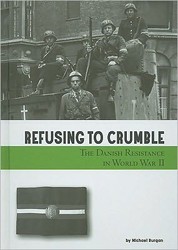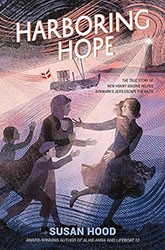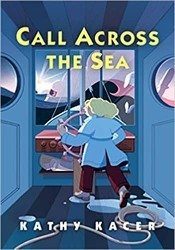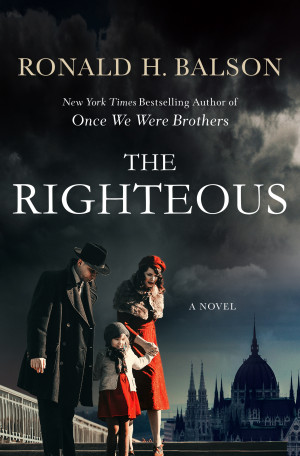The original version of The Christmas Menorahs appeared thirty years ago, inspired by a series of efforts to combat hatred in Billings, Montana. When a spate of attacks on Jews, Black people, and others threatened their community, residents of Billings were determined to express their solidarity and take action. In this new edition of the book, which is sadly still relevant, Janice Cohn and Bill Farnsworth relate how one Jewish family refuses to be intimidated by bigotry — and, in the process, the family learns that their empathetic and courageous neighbors will defend the values of their town.
The book’s setting is idyllic. Pictures in soft pastels and earth colors show a snowy winter enlivened by holiday lights. The interiors of homes are reminiscent of classic American illustrations and timeless values. Yet this tranquility is shattered when unnamed antisemites and racists deface homes and houses of worship, as if determined to challenge the town’s self-image of warmth and acceptance. When young Isaac Schnitzer’s homework session is interrupted by violence, his first response is fear: he removes the menorahs proudly displayed in his home. His parents remind him that surrendering to bullies is demeaning and worthless, a message that the rest of the book reaffirms through presenting effective alternatives. Law enforcement is part of the solution, but Chief of Police Inman prefers community outreach to reactive responses. His plan to enlist community support is met with enthusiasm, and soon Christian homes and churches are adding menorahs and statements of resistance to their own environments.
This course of action is far from spontaneous. Cohn describes how students, teachers, clergy, and activists raise consciousness through discussion and learning. Isaac explains the holiday of Chanukah to his classmates, who then connect the courage of the Maccabees to examples from their own lives. Standing up for others is not automatic; it requires listening and mutual understanding.
One participant in a town meeting raises the example of Denmark during World War II. Unlike other countries where collaboration with the Nazis was pervasive, the Danes chose to stand up for their Jewish citizens. Although some of the historical details included are romanticized, the core facts are true. If people in even one occupied nation chose a different path, the notion that the Holocaust was inevitable must be questioned. While the residents of Billings never confront terror on that scale, they demonstrate that personal and communal responsibility can counteract threats to freedom.
Extensive additional materials in this thirtieth-anniversary edition include an essay by the Billings Gazette editor and another by a Jewish survivor from Denmark. The holiday season is not the only time to share this book with children — its compelling message of inclusiveness and concerted action is needed all throughout the year.
Emily Schneider writes about literature, feminism, and culture for Tablet, The Forward, The Horn Book, and other publications, and writes about children’s books on her blog. She has a Ph.D. in Romance Languages and Literatures.





